John Maizels takes on the challenge to recreate an old radio studio for the ABC.
The brief: build a 1980s country radio studio for a segment in a comedy/drama series.
What comes to mind when you read 1980s? Do you flash back to walls of carts, turntables, Byer tape decks, AKG and Sennheiser mics on goosenecks, planet lamps, and big on-air signs outside a studio with wooden furniture, an AWA BAC-1 and Cuemaster 750 decks? If so, you’re in the zone.
The challenge: Does any radio station today still look like that?
Even the few studios that still have original working mono RME consoles (and there are some) have long since dispensed with tape and moved to computers, and in the 1980s the LCD screen had not been invented. The studio has to be there and look the part because a gag calls for a radio talkback show. Gear needs to be set up in a way that’s compatible with a film shoot. So this was going to be a special build.
The location: a disused voice-over and engineering booth previously used to record talking books.
I swapped notes with the Head Set Decorator, and foolishly claimed that I could handle the full brief. She said yes, but couldn’t tell me exactly what would be needed other than old phones, turntables, gooseneck microphones, and tape recorders. Pretty sure they planned on prettying up whatever static stuff I could provide with small torches and fake lamps to trick up the result for the camera. Apparently that’s what they do. My aim was slightly different: provide a studio and control room full of stuff that would work, and look real, because it was real.
The solution: get into the Maiz Museum and Archive, and extract all the gear that I’ve been threatening to fix on that rainy day that never comes.
The summer break became a busy work cycle. Pull a piece of gear from the garage and move it to the family room. Turn it on to see if smoke comes out. Do a trip to WES for parts. Replace fuses, globes, and perished belts. Turn on again to see if smoke would come out. Connect to speakers and sources of audio. Wait to see if smoke comes out of the speakers. Back to WES for more parts. Rinse and repeat.
Several devices were overly exciting. The Soundcraft desk worked sometimes, but stopped working if the power was cycled. Channels worked, but the monitor section was weird and wouldn’t monitor. It was the power supply (who knew?). Replace all the caps and keep going. The Sonifex cart machines had belts that looked to be in perfect condition…and were perfect until they were touched, when the belts instantly disintegrated into puddles of very black goo. You couldn’t create that effect in a lab if you tried. Buy another bottle of isopropyl alcohol to clean up the mess. Rinse and rinse and rinse and repeat.
Smoke did indeed significantly emanate from several devices, most spectacularly from a Cuemaster 4000 record/replay machine which actually played half a cart before going BANG in a very loud and smoky way. Interesting technical challenge: replace the caps in a generation one home-design switchmode power supply for which there was no documentation. Pray that turning on the deck would not cause the house to catch fire.
Not surprisingly, circuit diagrams were a problem for much of the gear. The correct manual pages for the Sonifex carts came from a hobbyist in Holland. The ex-ABC Symetrix phone system had come with the wrong manual, something I’d failed to notice in 20 years of ownership. And it didn’t work: the mainframe and control boards refused to light up. Fortunately the open circuit regulator was easy to find, but almost every screw in the frame had to be removed to replace it. My two Cuemaster 750 decks couldn’t be powered up: they had entirely different fuseholders of a type no longer made, and the fuses for both decks were made of unobtanium too. Strip down, replace the fuseholders, and pray for no smoke.
Along the way I cornered the local and international market on the old red XLR power connectors. Fun fact: the world supply of those connectors was from Victoria but I still can’t understand how they ever got past the SECV, or why the BBC thought it was a good idea to standardise having power on the male.
The AWA BAC-1 took special attention: it needed to look the part, but really only the meters needed to actually work. Sadly, one of the original AWA meters had turned into a fuse and was very open circuit. Unbelievably, I had another Master Instruments meter of almost identical design which had been used as a doorstop. Combining the two created a Franken-meter which not only looks the part but has correct ballistics. They don’t make them like that any more. Actually, they don’t make them at all any more.
Speaking of carts: those of you who remember comparing Fidelipak and Audiopak carts: the Audiopak carts still win. I have a box full of Fidelipaks where the head pads have totally turned to dust. And I have another two boxes of carts which might contain priceless 1970s content. It’s a bit hard to tell when they won’t play. Still, nobody noticed or complained.
On the day before the shoot I relocated and set up the gear – it took most of a very long day with no air conditioning to wire everything up again. But the result was worth it: a 100% practical studio where the mics worked and the meters bounced, and no anorak would need to go unhappy. Sadly, the flashing on-hold lights, the bouncing meters, the carefully synchronised studio clocks, and the working Cuemaster 4000 never made it in-shot. No matter. Three of us knew it could have worked, and the audio director was impressed.
The show: you can check out the whole glorious two minutes of fame in Series 2 Episode 2 of Frayed, from 13:27 and available on iView right now. If you haven’t seen the series at all, it’s a bit of a giggle. You can binge from the start. By the way, the “studio” was a real VO booth, so it was studio-sized. The very tasteful lighting was from practical sources, and it’s one of those miracles of film production that the shots don’t show the other 450 people who crammed into the booth for the shoot. Think “Marx Brothers stateroom scene” and you’ll be close.
The without-whom: there are many who went above-and-beyond to help with the reconstruction of my household’s equipment collection, whether they knew it or not: the long-suffering Lorraine, several staff at WES, Alistair Reynolds, Andrew Chapman, Peter O’Neill, Dennis van Benthem, Karen Olliver, and all the people who stayed out of the family room for a month.
About the Author
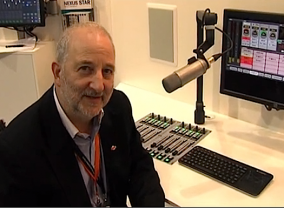 After years of bidding for treasures at ABC auctions, John claims Frayed as the tenuously plausible justification for his overstuffed man-cave. He appreciates the extreme irony of building a commercial station studio for an ABC TV show, using gear largely purchased over the years from the ABC at auction.
After years of bidding for treasures at ABC auctions, John claims Frayed as the tenuously plausible justification for his overstuffed man-cave. He appreciates the extreme irony of building a commercial station studio for an ABC TV show, using gear largely purchased over the years from the ABC at auction.
John Maizels has spent the last 50 years dabbling in IT and broadcast engineering; radio then television.These days he is a technology evangelist who recognises Ohm as a god, helps TV students to understand the difference between SDI and a sprocket, and believes that every engineer should be forced to feel the pain that they inflict on their customers.
He still enjoys doing the occasional VO and is passionate about radio and training. He is a Fellow of the SMPTE, recipient of the CBAA’s Michael Law Award, and volunteer President of Technorama Inc, so at least the money is where the mouth is.

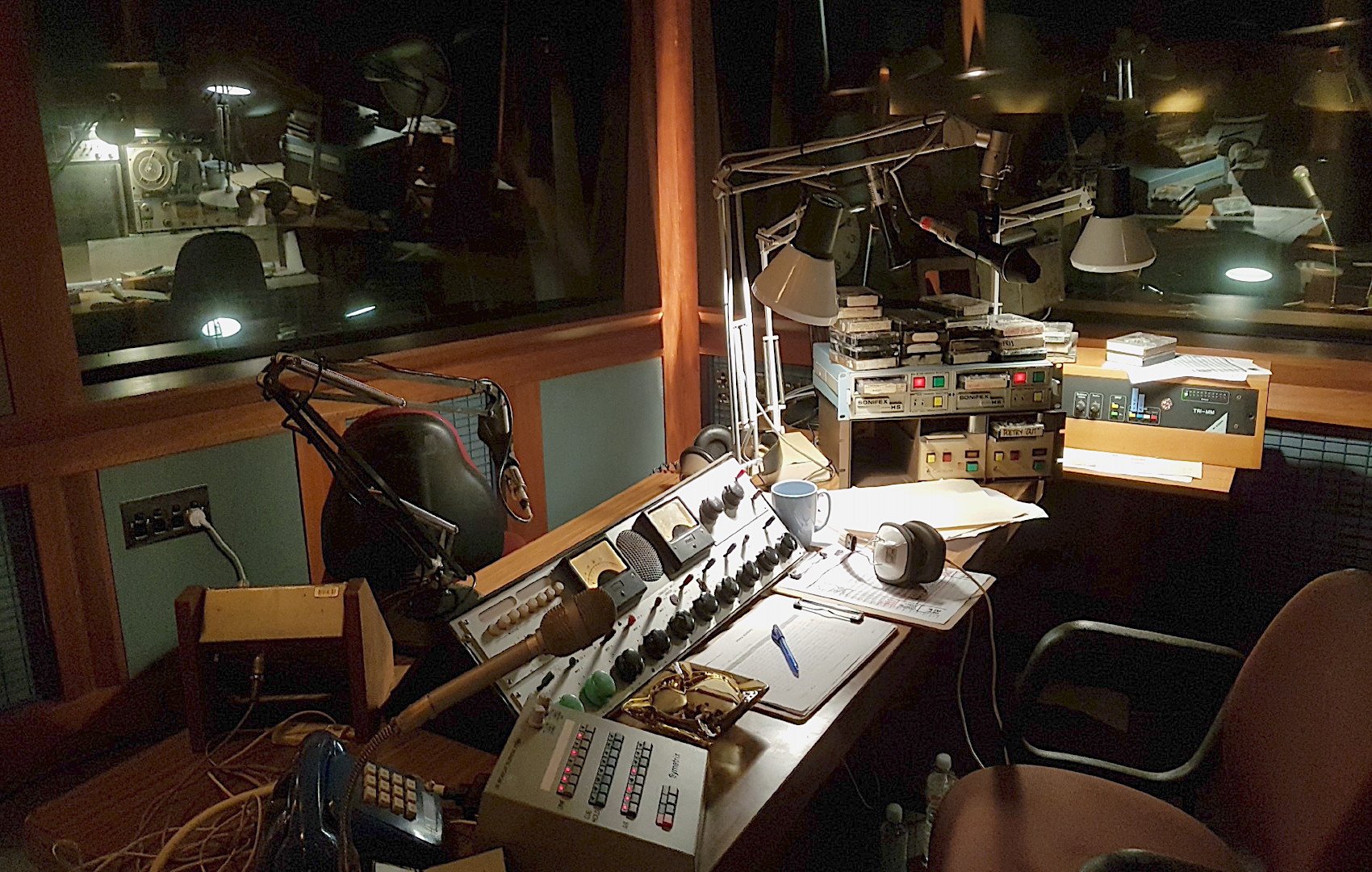
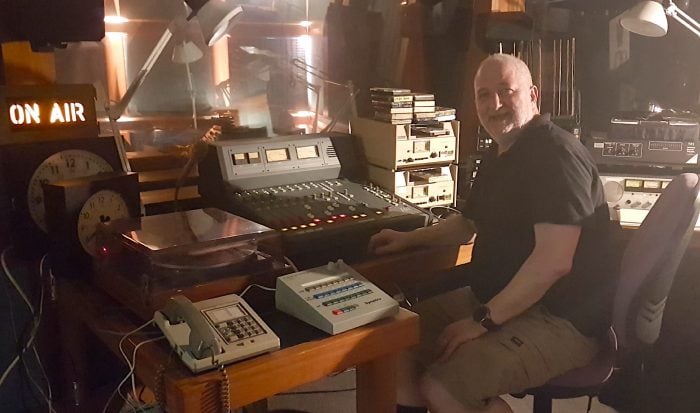
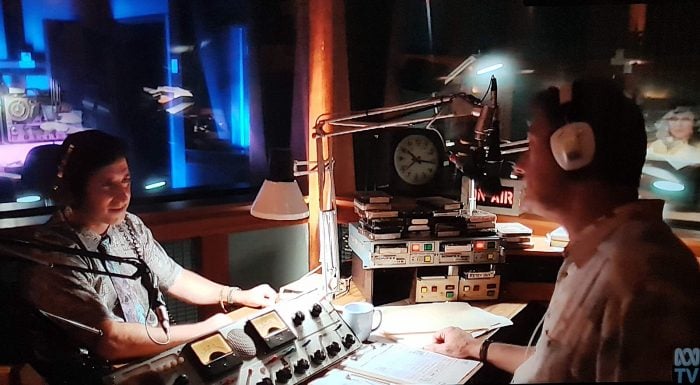
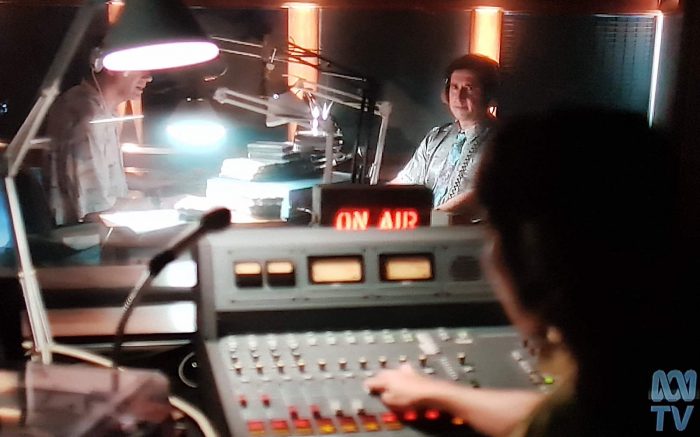
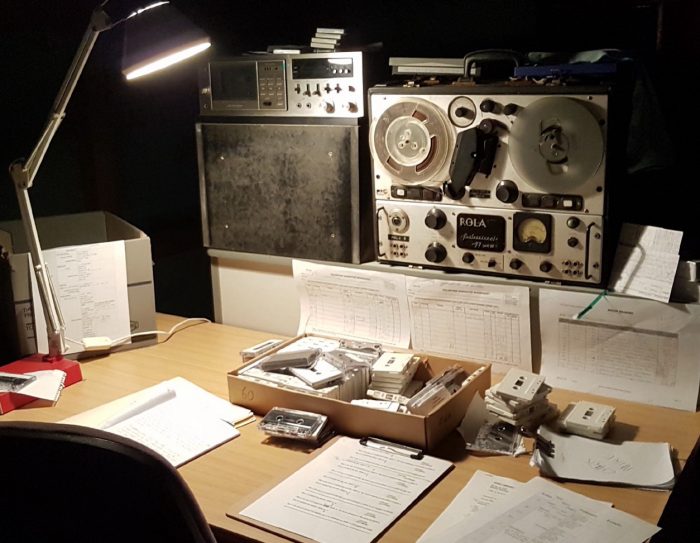
During the '80s I was hosting talk back shows on 2GB in Sydney and John's recreated studio brings back a lot of memories. The digital world has certainly made things a lot easier for presenters, but we did have a lot of fun in those days! It was even more basic back in the '60s when talkback first came in and I was working with John Pearce on 2GB hitting a gong to cue network stations to rejoin the main broadcast!
Barry Eaton RadioOutThere.com
In the last photo was a ROLA reel-to-reel taperecorder.
It is highly likely that the ROLA machine was made in Australia along with other magnetically-related items such as ROLA loudspeakers. Open any Australian-made consumer electronic items such as a TV, radio or stereogram, it was likely that the loudspeakers were made by ROLA.
ROLA was spawned by the British ROLA company which originated in the US.
Sources:
http://waywiser.fas.harvard.edu/people/8658/rola-company
https://www.gracesguide.co.uk/British_Rola
https://www.radiomuseum.org/dsp_hersteller_detail.cfm?company_id=7922
Interestingly, RME panels were made in Australia by RME which was owned by WESGO (2WS, 2GO). They had plans to export their panels to the world particularly Asia and the US,
source: https://www.afr.com/companies/wesgo-to-expand-radio-equipment-manufacture-19871119-k2if2.
It appears that RME has been sold to an overseas interest whose focus is from panels to interfacing audio information to and from networks and computers. There is little evidence of Australia's beginnings,
source: https://www.rme-audio.de/company.html
Thank you,
Anthony of researching and exciting Belfield
Sadly, I didn't see the comments above for 18 months.
Barry Eaton: the gear in this studio would have been in use in the 80s. The Soundcraft desk probably wasn't released until the early 90s, but it was close enough. The AWA BAC-1 definitely was around at that time, but on last legs since most stations would have upgraded to RME, PKE or other desks made to support AM Stereo (and maybe FM...).
Anthony: that Rola was definitely made in Melbourne (they all were, as far as I know) and was ex-ABC who had squilliions of them. Ironic, given that (anecdotally) the ABC was responsible for Max Byer being forced out and selling to Rola after the ABC returned an overly large number of the red 77-Mk1 machines post 1956 Olympics. Byer was a genius, changing our thoughts about form-meets-function to create a product that should have been world-dominant. We also had a number of other Australian manufacturers with unique and wonderful product: eg Commonwealth Electronics (turntables) and MBE (unique pickup arms and cartridges, designed specifically for broadcast work).
Another driver of development in Australia was Graham Thirkell, who was at Rola (and Plessey, when they took over the business). Graham was responsible for early cart machines produced for the 68 Expo, then the CT80 series that were another mainstay of the local industry. And, of course, Cuemaster, without whom the Australian industry would have had to import a lot more lower-quality cartridge machine product from the US, and who took over the 77 lineage from Plessey.
The explosion of mono-to-stereo conversions driven by upgrade to AM Stereo triggered birth of RME, and a number of other also late-lamented makers of consoles - mostly all good electronically, and some good operationally but equally some downright poorly thought through and hazardous.
Thanks for the links. I think the German RME might be unrelated (but impossible to tell from their website). The AFR story still exists, but you have to be a subscriber... and I'm not. The link throws a 404, but search engines find the article if you use the keywords "WESGO TO EXPAND RADIO EQUIPMENT MANUFACTURE".
The Radiomuseum link is particularly (if incompletely) informative, and gives the background on the transition of Rola from assembler to manufacturer. The Byer "takeover" date meshes with the post-Olympics stories that I've been told.